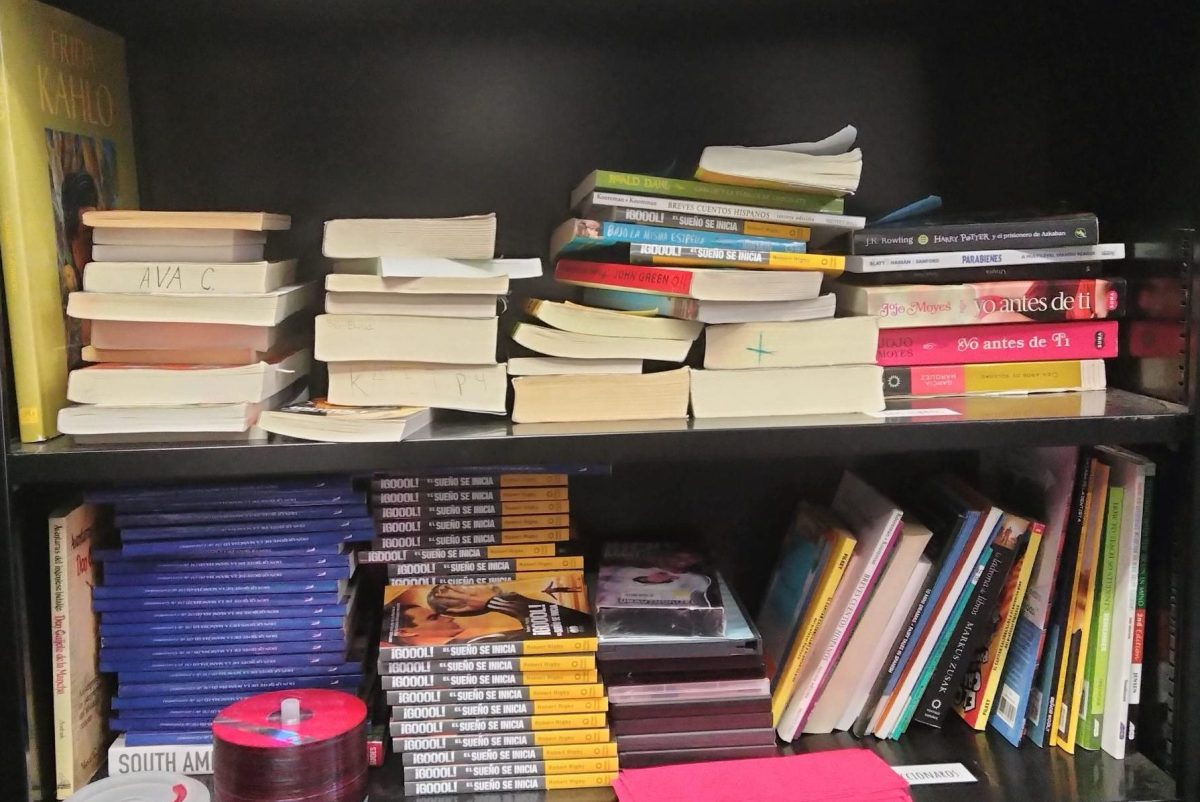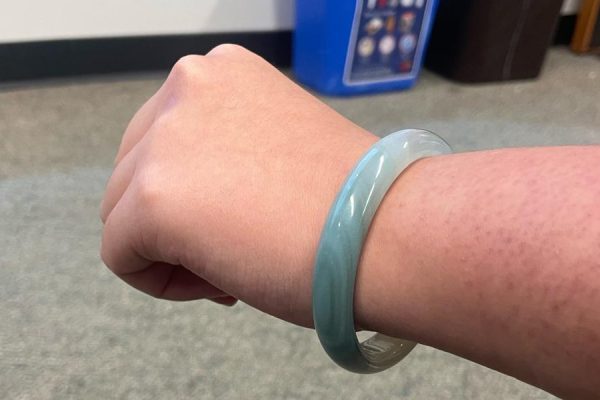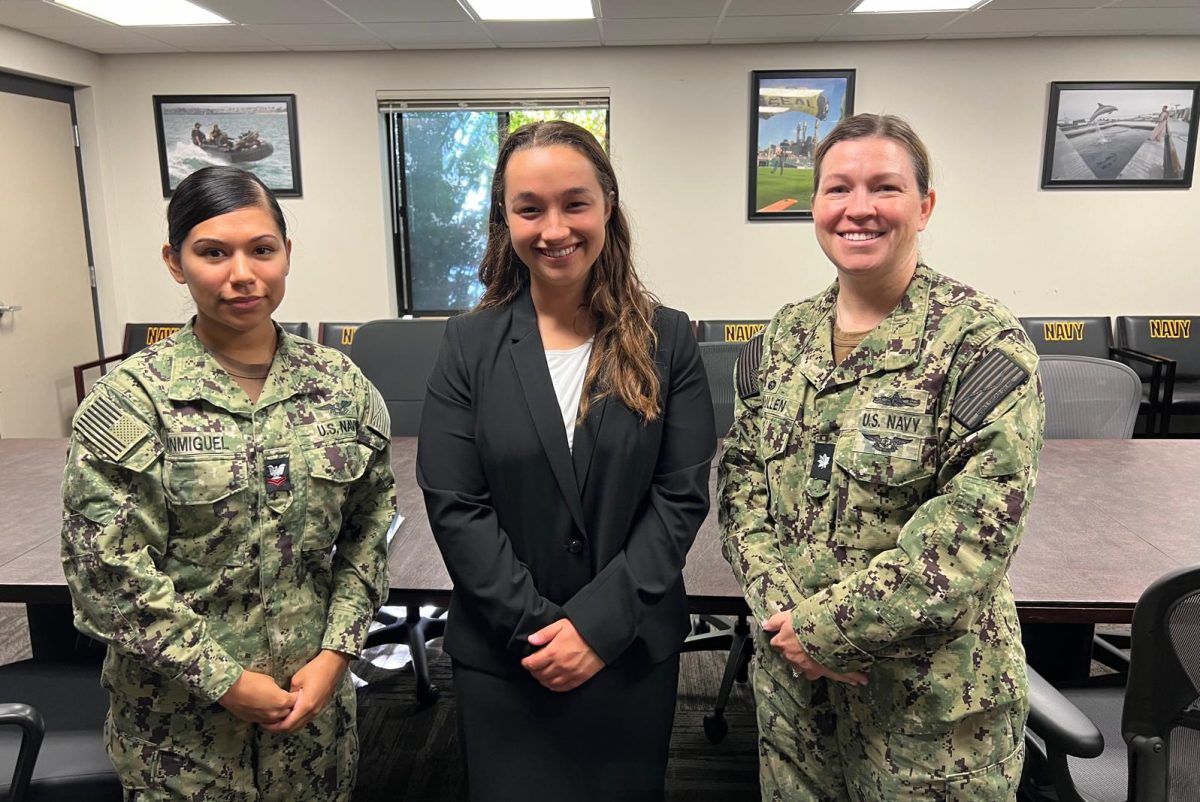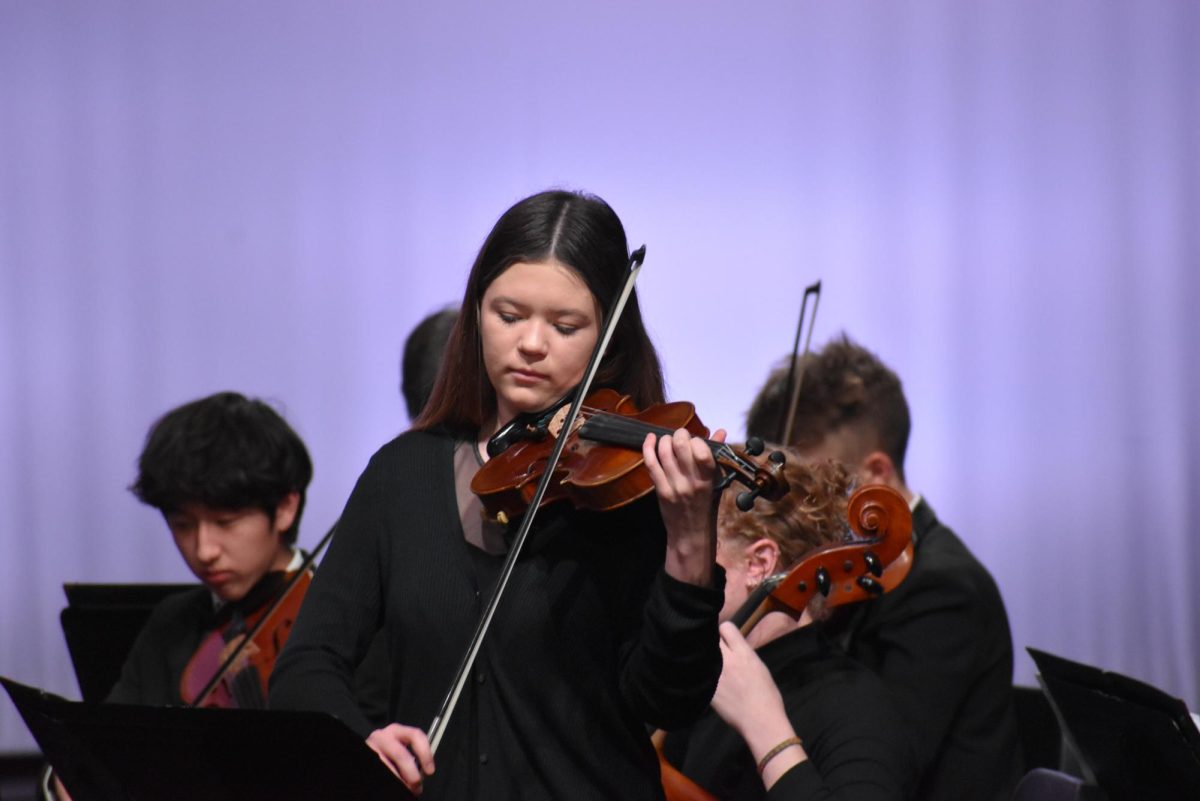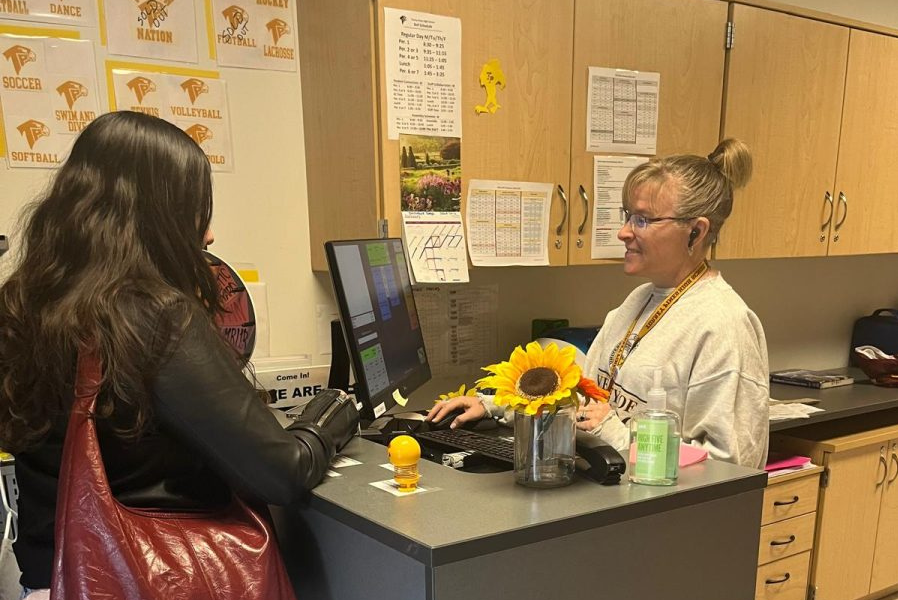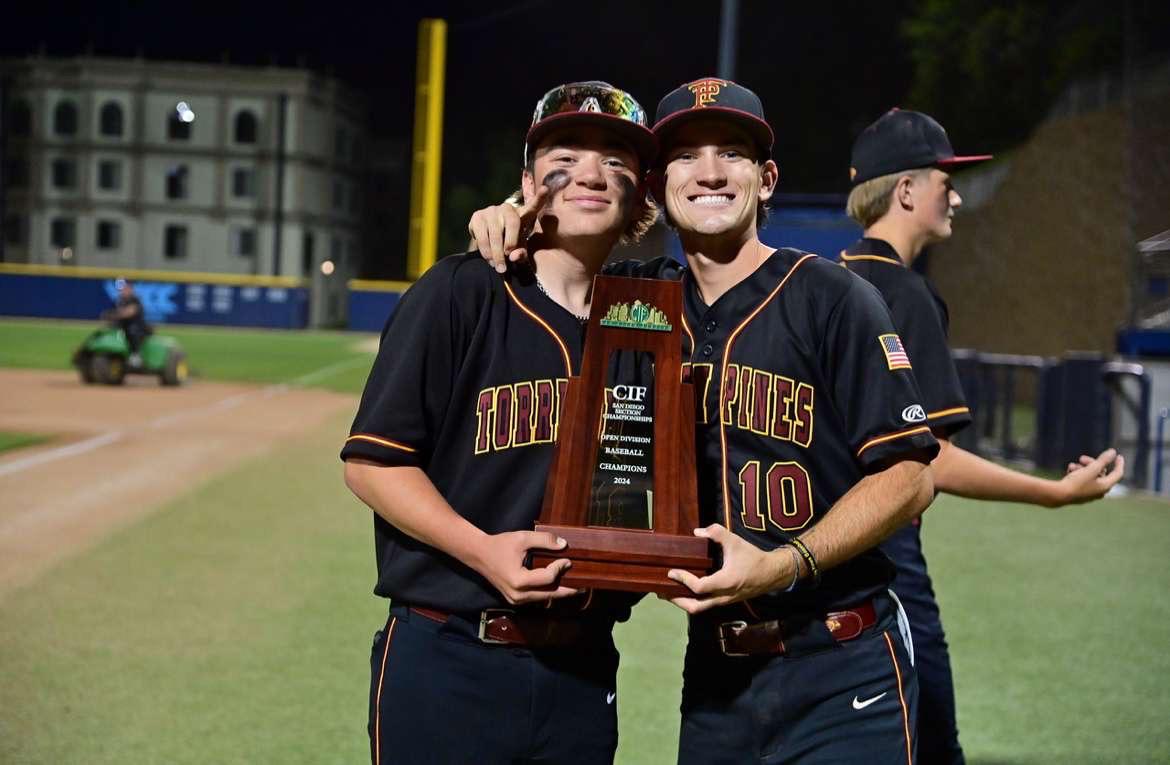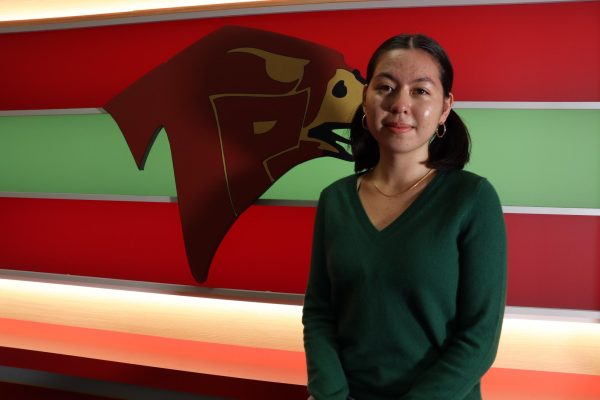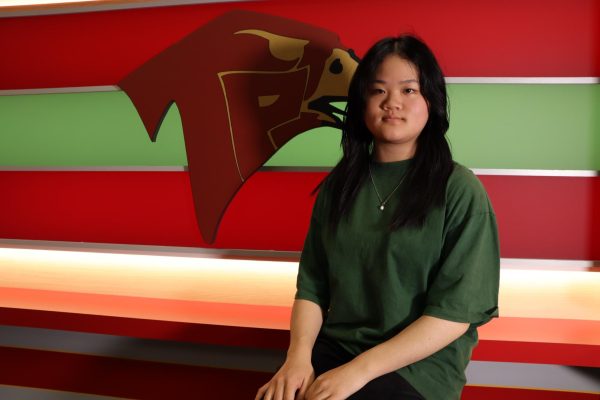So much of a teacher’s personal time and energy is put into setting students up for success, even beyond the classroom and coursework, whether it be checking in with students’ well-being, crafting fun projects or buying pens and colorful markers. Providing resources, such as books, is included in this commitment. In many teacher classrooms, shelves of personal favorites, recommendations and course-related literature line the walls. Yet, when unadvertised, students underutilize this resource.
“I think it’s great because if people don’t have those books at home or they want to explore other books it’s really easy, really convenient and really within reach,” Emily Chao (10) said. “I think the only downside is that many people don’t use them or don’t know they’re there or don’t know if they can borrow books.”
Chao’s teacher, Viviana Alvarado, who teaches Spanish 3, Spanish 4 and AP Spanish, assigned her class a book report project.
“I wanted the students to engage with materials that were not just to learn Spanish, but any book they would like to read,” Alvarado said. “Something that maybe they read in English and they thought was interesting, we can find it in Spanish … It’s a challenge for the students. Usually the readings for Spanish learners come with vocabulary and it’s very structured so I wanted them to have a bit more freedom … they can leave [their books] here after so the library grows as the years go by.”
This year, in addition to her personal library, the foundation provided Alvarado’s class with a set of books.
“The one that the foundation bought for me is ‘¡Goool! El sueño se inicia,’” Alvarado said. “It’s the life of a student in the U.S. who came from Mexico. He wants a better life so he wants to become a soccer player and he moves to England. It’s really nice because you can learn a little bit about different cultures and his family is from Mexico so you learn a lot about different traditions.”
Like Alvarado, English 10 Honors, English 11 and Yearbook teacher Brandon Keller uses his classroom library to support his students in their classwork.
“It stemmed from the fact that I wanted to do independent reading in class,” Keller said. “In order to do so I wanted to be able to provide as many books as I could. Also, I wanted to have an environment where people, if they wanted to in their free time, have something to do — I try to limit chromebooks and cell phones as much as possible.”
This is evident in Keller’s junior class in particular, since independent reading is a class assignment.
“They do some looking around to try to find a book in the classroom they like and then for a semester, for 20 minutes at the start of some class periods, they just get to read whatever book they chose,” Keller said. “So I wanted to make sure that I had a wide variety and something that everyone would like.”
Some students, including Yifan Fang (12), checked out books from teachers outside of assigned work.
“It was the [AP Seminar] textbook with all of the philosophical stories and I was like ‘Oh, that’s kind of cool,’” Fang said. “The back had some writing advice sections for essays … and tracking with how the book had been super helpful and had really cool stuff I was like, ‘Oh, there might be some insights in there.’ So I borrowed it and [over] the weekend, just went through the back with the writing advice and took some notes down.”
The next year in AP Research, Fang once again checked out books related to his work in class.
“I was talking about my research project and it had a lot to do with literature and analysis and [Mrs. Lopez] volunteered like, ‘Hey, I have these books that I recommend you to look through,’” Fang said. “She was very encouraging and I could ask her questions about the sections and she would help me.”
One book Fang checked out was the “Bedford Glossary of Critical and Literary Terms.” The other was a bit more personal to Lopez.
“The other book was ‘Contexts for Criticism,’ and it was about several different ways of analyzing and critiquing books,” Fang said. “Apparently it was her college textbook, so she had her personal notes everywhere and it was really cool.”
Fang appreciated the more personal nature of checking books out from a teacher as opposed to a library.
“Checking out books from teachers is really cool because unlike a library where … it has everything so you don’t really know where to look, teachers put [their books] there for a reason,” Fang said. “It’s either related to their class or their personal favorite books. I feel like having them recommend it would be super good for getting to know them or getting to know the class … it would be really cool if more teachers did that.”
Keller’s own collection reflects this distinct personalization.
“There’s a library near my house that does a used book sale where you can get a big old grocery bag and fill it up with as many books as you can for five dollars,” Keller said. “I go over there and see what books look interesting to me and then I also try to get some of the teen mystery, romance stuff that I know everyone is interested in. It’s a nice balance, I try to get actors and comedians who wrote biographies, but also authors that I really enjoy as well. I’d say a lot of it is just books that I would like to read.”
Although many teacher libraries are open for use, many students are unaware of the opportunity to check books out.
“A lot of my teachers have books on their shelves that are kind of just there and sometimes they’ll be like, ‘If you’re done with the test just look at the books, read through them,’ but the topic of borrowing them never came up — it was more of an in class kind of thing,” Fang said.
Chao believes that students would be more inclined to check books out if they were made aware of their availability.
“Reminding the students that they can use [the library would be great] because [teachers] may tell students in the beginning of the year but then maybe towards the middle when students want a book they may not know if they can,” Chao said. “I think more students would borrow books if that happened.”


